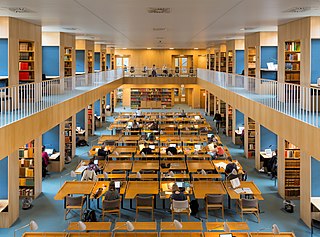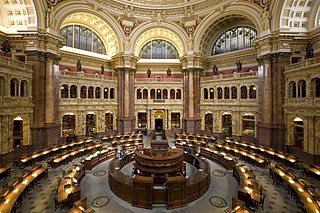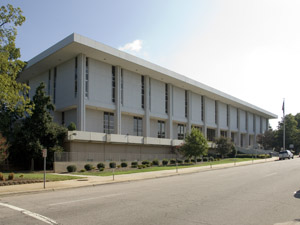Related Research Articles

The Ivy League is an American collegiate athletic conference comprising eight private research universities in the Northeastern United States. The term Ivy League is typically used beyond the sports context to refer to the eight schools as a group of elite colleges with connotations of academic excellence, selectivity in admissions, and social elitism. Its members are Brown University, Columbia University, Cornell University, Dartmouth College, Harvard University, Princeton University, University of Pennsylvania, and Yale University.

A library is a collection of materials, books or media that are accessible for use and not just for display purposes. A library provides physical or digital access materials, and may be a physical location or a virtual space, or both. A library's collection can include printed materials and other physical resources in many formats such as DVD, CD and cassette as well as access to information, music or other content held on bibliographic databases.
Interlibrary loan is a service that enables patrons of one library to borrow physical materials and receive electronic documents that are held by another library. The service expands library patrons' access to resources beyond their local library's holdings, serving as "an integral element of collection development" for libraries.

A research library is a library that contains an in-depth collection of material on one or several subjects. A research library will generally include an in-depth selection of materials on a particular topic or set of topics and contain primary sources as well as secondary sources. Research libraries are established to meet research needs and, as such, are stocked with authentic materials with quality content. Research libraries are typically attached to academic or research institutions that specialize in that topic and serve members of that institution. Large university libraries are considered research libraries, and often contain many specialized branch research libraries. The libraries provide research materials for students and staff of these organizations to use and can also publish and carry literature produced by these institutions and make them available to others. Research libraries could also be accessible to members of the public who wish to gain in-depth knowledge on that particular topic.

The Association of Research Libraries (ARL) is a nonprofit organization of 127 research libraries at comprehensive, research institutions in Canada and the United States. ARL member libraries make up a large portion of the academic and research library marketplace, spending more than $1.8 billion every year on information resources and actively engaging in the development of new models of scholarly communications.
Voyager is an integrated library system used by hundreds of libraries, universities and museums around the world. Voyager was developed by Endeavor Information Systems Inc., which was merged into Ex Libris Group in December 2006.
In library science, special collections are libraries or library units that house materials requiring specialized security and user services. Special collections can be found in many different organisations including research libraries, universities, colleges, schools, national libraries, public libraries, museums, art galleries, archives, historic houses, cathedrals, subscription libraries, learned societies, hospitals, companies and monasteries.
The San Diego County Library is a public library system serving San Diego County in the U.S. state of California. Any person living in the state is eligible for a free library card. The San Diego County Library consists of 33 branches, two bookmobiles, and two 24/7 Library to Go kiosks. Library Journal and Gale conferred the 2012 Library of the Year award on the San Diego County Library.
A library technician is a skilled library and information professional to perform the day-to-day functions of a library, and assists libraries in the acquisition, preparation, and organization of information. They also assist patrons in finding information. The widespread use of computerized information storage and retrieval systems has resulted in library technicians assisting in the handling of technical services. Especially in small village libraries, a library technician may be the only person staffing the library. In larger libraries, they may help run certain departments and supervise library clerks, aides, and volunteers. Because libraries are increasingly using new technologies, the role of the library technician is expanding and evolving accordingly.

The Yale University Library is the library system of Yale University in New Haven, Connecticut. Originating in 1701 with the gift of several dozen books to a new "Collegiate School," the library's collection now contains approximately 14.9 million volumes housed in fifteen university buildings and is the fourth-largest academic library in North America.

The State Library of North Carolina is an institution which serves North Carolina libraries, state government employees, genealogists, and the citizens of North Carolina. The library is the main depository for North Carolina state publications and serves the needs of North Carolina government agencies and state government employees by providing access to information resources that are vital to public decision-making and economic development.

The Texas A&M University Libraries support the teaching, research, and outreach missions of Texas A&M University through leadership in acquiring, managing, and delivering information in an environment that fosters learning and inquiry. In particular, Texas A&M is nationally and internationally recognized for many research collections, including:
The National Library Service for the Blind and Print Disabled (NLS) is a free library program of braille and audio materials such as books and magazines circulated to eligible borrowers in the United States and American citizens living abroad by postage-free mail and online download. The program is sponsored by the Library of Congress. People may be eligible if they are blind, have a visual disability that prevents them from reading normal print, or a physical disability that keeps them from holding a book. Library materials are distributed to regional and subregional libraries and then circulated to eligible patrons. In total there are 55 regional libraries, 32 subregional libraries, and 14 advisory and outreach centers serving the United States and its territories: the District of Columbia, Puerto Rico, the U.S. Virgin Islands, and Guam.
An inventory is the one method that libraries and archives use to determine whether some items in their collection are in need of preservation or conservation activities. A modern inventory might involve examining item by item with a barcode scanner and a laptop, with the objective of adjusting bibliographic and item records in theirs and OCLC's WorldCat databases. Using a laptop and handheld bar code reader will "reduce human error and inconsistencies, while helping to maintain staff concentration and enthusiasm for the project".
The United States contains some of the largest academic libraries in the world. Among the most notable collections are those at Harvard University, Yale University, the University of Michigan, the University of Illinois at Urbana–Champaign, and Columbia University. Many others were founded more recently, and are consequently on a much smaller scale.
An open-access mandate is a policy adopted by a research institution, research funder, or government which requires or recommends researchers—usually university faculty or research staff and/or research grant recipients—to make their published, peer-reviewed journal articles and conference papers open access (1) by self-archiving their final, peer-reviewed drafts in a freely accessible institutional repository or disciplinary repository or (2) by publishing them in an open-access journal or both.

The Younes and Soraya Nazarian Library is a central academic library of the University of Haifa, and one of the largest in Israel. It is also one of the most progressive Israeli libraries in terms of service, collection, physical space, and library information systems.
The Harold Andersen Library is the university library of the University of Wisconsin–Whitewater. The building was named after Harold Gilbert Andersen, and ground breaking and construction for the building began on April 9, 1951.
The Boston Library Consortium (BLC) is a library consortium based in the Boston area with 23 member institutions across New England.
References
- ↑ "BorrowDirect".
- 1 2 "Yale University Library Research Guides: Get it @ Yale: Borrow Direct".
- ↑ "Library cooperative programs". Stanford Libraries. Retrieved 2017-07-23.
- ↑ "Duke Press Release". BorrowDirect. Retrieved 2015-04-25.
- ↑ "Overview and History". Borrowdirect. Archived from the original on April 28, 2015. Retrieved June 5, 2022.
- ↑ Morris, Shaneka; Roebuck, Gary (2019). "ARL Statistics 2016-2017". ARL Statistics. pp. 40–57. doi:10.29242/stats.2016-2017. ISBN 9781948964043. S2CID 67898129.